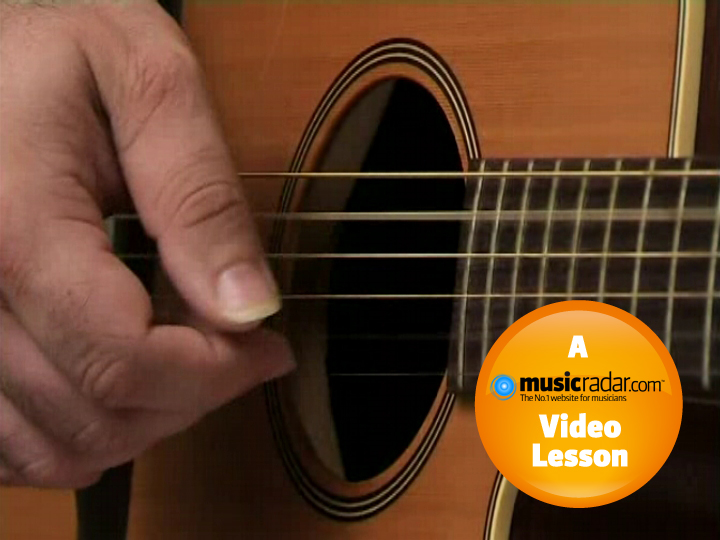Fingerpicking for absolute beginners
Play melodies and basslines together

The beauty of fingerpicking is that you can play melodies and basslines together using open chord shapes. We've got two examples for you here, based around open position A, D and E chords.
You can practise each example in full or break them down into their melody and bass parts. If you break them down, don't change the fingering - stay around those chord shapes. Otherwise when you play the full parts you'll have practised the wrong fingering!
Example 2 is much trickier than Example 1 so take the time to learn the melody and bass in this way. The picking is trickier too, particularly on the semiquaver rhythms and wherever you have to cross to another string in the melody. A basic rule of thumb is to try not to pick with the same finger for consecutive notes.
Next page: tab for the video examples
Example 1: simple melody with bassline

(Click tab to enlarge)
Practise this example chord by chord. Once you're comfortable with the first A chord, move on to the D, and so on.
Example 2: complex melody with bassline

(Click tab to enlarge)
Compare the melody here with Example 1. Try to work out where the extra notes are and pick the melody by alternating your i and m fingers.
Want all the hottest music and gear news, reviews, deals, features and more, direct to your inbox? Sign up here.
Total Guitar is Europe's best-selling guitar magazine.
Every month we feature interviews with the biggest names and hottest new acts in guitar land, plus Guest Lessons from the stars.
Finally, our Rocked & Rated section is the place to go for reviews, round-ups and help setting up your guitars and gear.
Subscribe: http://bit.ly/totalguitar
